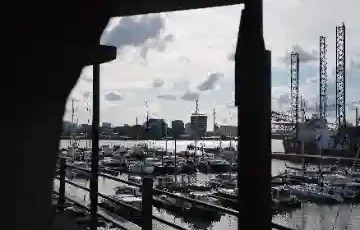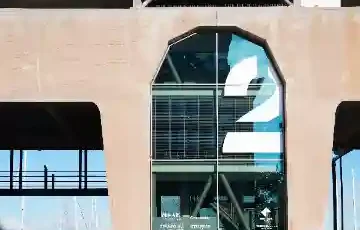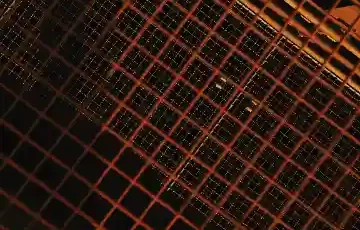Brand protection in the Netherlands requires official registration with the Benelux Office for Intellectual Property (BOIP), granting exclusive rights to use your business name, logo or distinctive features. A registered trademark protects you for 10 years against unauthorized use by third parties in the Benelux region, with unlimited renewal options available.
Your brand represents the face of your enterprise. The name under which you sell products, the logo on your packaging, even a specific color or jingle: these distinctive signs make you recognizable to customers. Without legal protection in the Netherlands, however, you risk others copying or exploiting this identity for their own gain.
Brand protection emerges exclusively through registration in an official trademark register. With a registered trademark, you acquire an intellectual property right that allows you to prohibit others from using your brand. This exclusive right applies only to the geographic area for which you register, and exclusively for the products or services you specify during registration.
Furthermore, registration costs remain manageable compared to potential losses from brand theft. The Dutch business landscape sees approximately 15,000 trademark applications annually, demonstrating how entrepreneurs increasingly recognize the value of formal brand protection. Moreover, registration provides immediate legal standing when confronting infringers, eliminating lengthy debates about brand ownership.
Why Registration of Your Brand Proves Essential Under Dutch Law?
Distinctive character forms the core of effective trademark protection under Dutch law. Consumers must immediately recognize that a product or service originates from your company upon seeing your brand. Therefore, a bicycle brand named ‘Bicycle’ or a bakery called ‘Bread’ receives no registration: these brands merely describe the product itself without distinctive power.
The Benelux Office for Intellectual Property (BOIP) must refuse descriptive and non-distinctive trademark applications according to Article 2.28 of the Benelux Convention on Intellectual Property. You do not receive a refund of your application costs in such cases. Consequently, you pay from €249 for a Benelux trademark registration with three trademark classes, an amount you only forfeit upon successful registration.
A registered trademark offers concrete legal protection on three levels:
- Identical protection: Nobody may use the same brand for identical products or services
- Comparative protection: Similar signs for comparable products remain prohibited when consumer confusion arises
- Famous brand protection: Renowned brands like Heineken or Coca-Cola can even prohibit use for non-similar products
Additionally, registration creates a public record that deters potential infringers. Research shows that 65% of entrepreneurs avoid brand names after discovering existing registrations, demonstrating the preventive power of formal registration. This deterrent effect alone justifies the relatively modest investment in trademark protection.
How to Prevent Your Brand from Already Existing in the Netherlands?
Verify thoroughly before registering whether your brand remains available. This verification prevents costly legal conflicts after registration. Search the BOIP trademark register for identical and similar brands. Additionally, search the Trade Register and via search engines for variations of your desired brand name.
Consider activities of existing brand holders during this process. An identical name for a completely different product usually presents no problem. The name ‘Delta’ for financial services barely conflicts with ‘Delta’ for coffee machines. However, a similar name in the same industry almost certainly leads to legal opposition.
Others can file opposition within three months after publication of your trademark registration. This objection typically arises when your brand closely resembles an earlier registered brand for identical products. The opposition procedure costs time and money, therefore thorough preliminary research prevents this situation.
Devote extra attention to variations: check not only ‘Technova’ but also ‘Techno Nova’, ‘Tech Nova’, ‘Technovation’. In 75% of rejected trademark registrations, confusion with existing brands plays a role. A lawyer specialized in trademark law advises you about the risks of your chosen brand name.
Professional Search Services Reduce Registration Risks
Professional trademark search services employ specialized software that scans multiple databases simultaneously. These services identify phonetic similarities, visual resemblances and conceptual overlaps that manual searches might miss. For example, ‘Technovation’ might conflict with existing brands like ‘TechnoVision’ or ‘Innovation Tech’ depending on product classes.
An Amsterdam entrepreneur recently faced €12,000 in legal costs after registering ‘FreshBite’ for catering services, unaware of an existing ‘Fresh Bite Company’ trademark in the same sector. Professional preliminary research costing €500 would have prevented this expensive conflict entirely. Therefore, investing in thorough searches proves financially prudent for serious business ventures.
Which Geographic Protection Suits Your Enterprise Under Dutch Law?
Trademark law always applies to a specific geographic area. Choose the area where you operate or intend to operate, because protection in an excessively broad area leads to unnecessary costs and risks.
For entrepreneurs active in Belgium, the Netherlands or Luxembourg, a Benelux trademark registration automatically provides protection in all three countries. Registration exclusively for the Netherlands proves impossible: the Benelux Convention mandates joint registration. This Benelux registration costs from €249 and remains valid for 10 years, after which you renew repeatedly for €274.
Do you want to protect your brand simultaneously for all 27 EU countries? Then you request a European Union trademark at the European Union Intellectual Property Office (EUIPO). This European registration prevents you from needing 27 separate national registrations. The costs amount to €850 for electronic application with one trademark class.
International Brand Protection via the Madrid System
Do you operate outside the European Union? Then the Madrid system offers access to trademark protection in 133 countries. Through BOIP you request international trademark registration, selecting specific countries from this treaty. This procedure requires an existing Benelux registration as foundation.
International registration costs vary per chosen country. Basic costs start from 653 Swiss francs at the World Intellectual Property Organization (WIPO) in Geneva. Additionally, you pay a variable amount per country, depending on local tariffs.
For countries outside the Madrid system, such as South Africa, you request registration directly at the national trademark authority. This typically requires a local representative and communication in the official language of that country. An IP professional with local agents supports you, since independent application proves complex and error-prone.
Notably, international expansion without trademark protection creates severe vulnerabilities. A Dutch software company discovered competitors in Singapore using their brand name after failing to secure Asian trademark rights. Consequently, they lost market share worth approximately €200,000 annually before resolving the dispute through expensive litigation.
What Happens During Trademark Infringement Under Dutch Law?
Trademark infringement occurs when a third party uses your registered trademark without permission. As trademark holder, you take legal action against this unauthorized use.
The court can impose far-reaching measures upon proven infringement: a prohibition on further use, destruction of inventory bearing the infringing brand, damages and reimbursement of legal costs. Article 2.20 of the Benelux Convention on Intellectual Property grants trademark holders these enforcement powers.
A trademark holder actively monitors whether third parties misuse their brand. This surveillance process occurs through three channels:
- Marketplace monitoring: Scanning hundreds of online platforms for suspicious sellers using your brand
- Domain monitoring: Detecting domain names that infringe upon your trademark rights
- Social media surveillance: Infiltrating closed groups where counterfeit articles potentially sell
Upon discovering trademark infringement, you first collect evidence. Make screenshots, purchase test products, document prices and seller profiles. Subsequently, you send a cease and desist letter demanding the infringer stops within 14 days. In many cases, this direct contact leads to cessation without further legal steps.
Does the infringer not stop? Then you initiate preliminary injunction proceedings at the Amsterdam District Court or substantive proceedings. In urgent situations, preliminary injunctions deliver a provisional judgment within several weeks. Substantive proceedings take longer but result in a definitive ruling about the trademark infringement.
Do you want assured effective brand protection in the Netherlands? Engage legal counsel at the first signs of infringement. A specialized trademark lawyer in Amsterdam assesses the severity of the situation and advises about the most effective approach.
How Long Does Your Brand Protection Remain Valid in the Netherlands?
A European trademark registration protects you for 10 years. After this period, you renew the registration repeatedly for 10 years, in principle indefinitely. Therefore, your brand theoretically maintains protection eternally, provided you renew timely and pay registration costs.
However, use of your brand remains mandatory for maintaining protection. When you demonstrably fail to use your registered trademark for five consecutive years, a third party can request a declaration of forfeiture. The court declares your trademark forfeit upon proven non-use, causing you to lose all protection.
This use must moreover be serious: sporadic symbolic application does not suffice. Case law demonstrates that at least normal commercial use within the relevant market proves necessary. A webshop with one product under your brand name, never actually sold, does not count as serious use.
Therefore, always retain proof of trademark use: invoices, advertisements, packaging, website screenshots with timestamps. This evidence protects you against forfeiture requests from third parties who themselves want to use your brand.
Active Use Requirements Create Practical Obligations
The Dutch legal system interprets “serious use” strictly. For instance, a Rotterdam fashion brand lost trademark protection after proving only minimal social media posts without actual product sales over five years. Conversely, demonstrated monthly sales exceeding €2,000 consistently satisfies use requirements according to established jurisprudence.
Maintain comprehensive documentation: quarterly sales reports showing trademark use, marketing materials featuring your brand, customer testimonials mentioning your brand name. This organized approach ensures you can quickly demonstrate compliance if challenges arise.
Which Steps Constitute the Trademark Registration Process in Dutch Law?
The trademark registration procedure at BOIP follows a fixed procedure that averages four months for applications without complications. Understanding this timeline helps you plan product launches and marketing campaigns effectively.
- Preliminary research: Verify availability in trademark register, Trade Register and via online searches
- Submit application: Complete online form via BOIP, specify trademark classes and products/services
- Formal examination: BOIP verifies within several weeks whether your application remains complete and correct
- Substantive assessment: BOIP evaluates whether your brand possesses distinctive character and does not prove descriptive
- Publication: Upon approval, BOIP publishes your brand, after which an opposition period of three months begins
- Registration: Without opposition or after successful resolution, definitive registration follows
The costs for a Benelux trademark registration start from €249 for three trademark classes via online application. Each additional trademark class costs €46. A paper application brings €40 extra administrative costs.
Select carefully the correct trademark classes during registration. The international Nice Classification system divides products and services into 45 classes. Class 25 includes, for example, clothing and footwear, Class 35 concerns advertising services and commercial intermediation. Incorrect classification leads to limited protection or unnecessary costs.
Do you doubt the correct classes or the registerability of your brand? A trademark advisor or intellectual property lawyer guides you through the process and prevents costly mistakes. On average, an entrepreneur invests €1,500 to €2,500 in professional guidance for trademark registration, an amount that repays itself by preventing legal conflicts.
Strategic Class Selection Maximizes Protection Value
Consider future business expansion when selecting classes. An Amsterdam technology startup initially registered only Class 42 (IT services) but later expanded into Class 9 (software products), requiring additional registration costing €274. Strategic initial selection of both classes would have saved money and provided immediate comprehensive protection.
Furthermore, analyze competitor registrations in your industry. If competitors protect Classes 35, 41 and 42 for similar services, you should consider identical coverage. This defensive strategy prevents competitors from later claiming your class selection indicates different market positioning.
What Actions to Take When Your Brand Gets Attacked in the Netherlands/
Discover a competitor using your business name or logo without permission? Act immediately but deliberately. Emotional reactions often lead to escalation, while strategic action proves more effective.
Start by collecting complete evidence. Document precisely where, when and how the infringer uses your brand. Make timestamped screenshots, purchase test products if possible, collect advertisements. This evidence forms the basis of your legal position.
Subsequently, have a cease and desist letter sent through a Dutch lawyer. This letter itemizes the infringement, references your registered trademark and Article 2.20 of the Benelux Convention, and demands cessation within 14 days. Additionally, you announce legal steps upon non-compliance. In 60% of cases, the infringer stops after this letter, fearing civil proceedings in the Netherlands.
Does the infringer not respond or refuse to stop? Then preliminary injunction proceedings at Amsterdam District Court follow. This urgent procedure takes several weeks and delivers a provisional prohibition on further use. The court often imposes a penalty of €1,000 to €5,000 per day upon violation of the prohibition.
Besides the prohibition, you claim damages for suffered losses. A Dutch lawyer calculates this damage based on lost revenue, reputational harm and profit loss. Average damage awards for trademark infringement vary from €5,000 to €50,000, depending on severity and duration of the infringement.
Documentation Standards Determine Dutch Litigation Success
Successful trademark enforcement in the Netherlands requires meticulous evidence collection. Dutch Courts demand clear proof that infringement occurred and caused quantifiable damage. As an example: an entrepreneur from Amsterdam successfully claimed €18,000 in damages by presenting: monthly sales comparisons showing 30% revenue decline, customer complaints about counterfeit products, documented advertising expenditures to restore brand reputation.
Conversely, inadequate documentation weakens your position significantly. Save all communications with the infringer, record dates of discovery, preserve original infringement examples. Digital forensics experts can authenticate screenshots and online evidence if disputes arise about timing or authenticity.
Contact a specialized law firm in Amsterdam for legal advice about protecting your brand and effective enforcement of your trademark rights against infringers operating in the Dutch market.
How Does a Brand Differ from a Trade Name Under Dutch Law?
Entrepreneurs regularly confuse a registered trademark with a trade name from the Trade Register. These two forms of protection differ fundamentally in rights and scope.
A trade name you register with the Chamber of Commerce (in the Netherlands: ‘Kamer van Koophandel’) during registration of your enterprise. This name identifies your business in commercial dealings but offers limited legal protection. Only with identical names within the same industry and the same operating area can an earlier trade name holder act against confusion.
A registered trademark conversely grants exclusive use for the entire Benelux area, regardless of where your competitor operates. This trademark right moreover applies to all forms in which you use the brand: on products, in advertising, as domain name or social media handle.
Practice example: An Amsterdam patisserie bears the trade name ‘Sweet Temptation’ since 2020. In 2023, a chocolate shop in Rotterdam also starts under ‘Sweet Temptation’. The Amsterdam patisserie can hardly take legal action, because only the trade name provides limited territorial protection. Had the patisserie registered ‘Sweet Temptation’ as a Benelux trademark for Class 30 (confectionery), she could immediately force the Rotterdam chocolate shop to change the name.
Therefore, register both your trade name with the Chamber of Commerce and your brand with BOIP. This dual protection prevents others from profiting from your reputation and customer base. The total investment amounts to approximately €300 and protects you for years against counterfeiting and confusion.
Combined Protection Strategy Closes Legal Gaps
Trade name registration provides regional protection based on actual use and seniority. Trademark registration delivers territorial exclusivity regardless of actual market presence. Together, these mechanisms create comprehensive legal barriers against infringement.
Moreover, trademark registration enables customs authorities to seize counterfeit goods at borders. An Amsterdam fashion retailer successfully prevented €45,000 worth of counterfeit handbags from entering the Netherlands by having their trademark registered in the customs enforcement database. Trade name registration alone offers no such customs protection.
Why Active Brand Monitoring Makes the Difference in the Netherlands?
Registration of your brand does not suffice: active monitoring remains necessary for effective protection. You often discover trademark infringement only months after commencement, when customers complain about counterfeit product quality or your revenue inexplicably declines.
Professional brand monitoring scans daily hundreds of online platforms for unauthorized use of your brand. This monitoring focuses on three channels:
Marketplaces such as Marktplaats, eBay and Amazon form breeding grounds for counterfeit articles. Automated software analyzes sellers based on prices, product photos and feedback. A designer handbag sold for €89 while the original costs €890? This signals possible counterfeiting.
Domain names infringers often register with your brand name. For example: you protect your brand ‘TechnoPlus’ for IT services, but a third party registers ‘technoplus-store.nl’ for selling counterfeit electronics. Via WHOIS databases you trace these domain name holders and request the registrar for suspension due to trademark infringement.
Social media groups, especially closed Facebook groups and Instagram accounts, facilitate sales of counterfeit products. Professional brand monitors infiltrate these groups, document transactions and collect evidence for legal action.
Upon discovering infringement, immediate action follows. The brand monitor sends a cease and desist letter, after which in 70% of cases the infringer immediately stops out of fear for proceedings. Persistent cases escalate to preliminary injunction proceedings or criminal complaints with police and Public Prosecution Service.
This active monitoring costs on average €500 to €2,000 annually, depending on intensity and number of channels. For brands with high counterfeit risks, such as fashion and electronics, this investment proves essential for maintaining reputation and revenue.
Monitoring Technology Advances Detection Capabilities
Modern brand protection services employ artificial intelligence algorithms that recognize visual brand elements beyond text matching. These systems detect logo variations, color scheme adaptations and design imitations that manual searches miss. An Amsterdam cosmetics brand discovered 23 Instagram accounts selling counterfeits through AI-powered image recognition, whereas manual searches identified only 4 accounts.
Additionally, blockchain technology enables tracking product authenticity through supply chains. Luxury goods manufacturers increasingly embed digital certificates that consumers verify via smartphone apps, exposing counterfeits immediately at point of sale. This technological evolution fundamentally transforms brand protection effectiveness.








